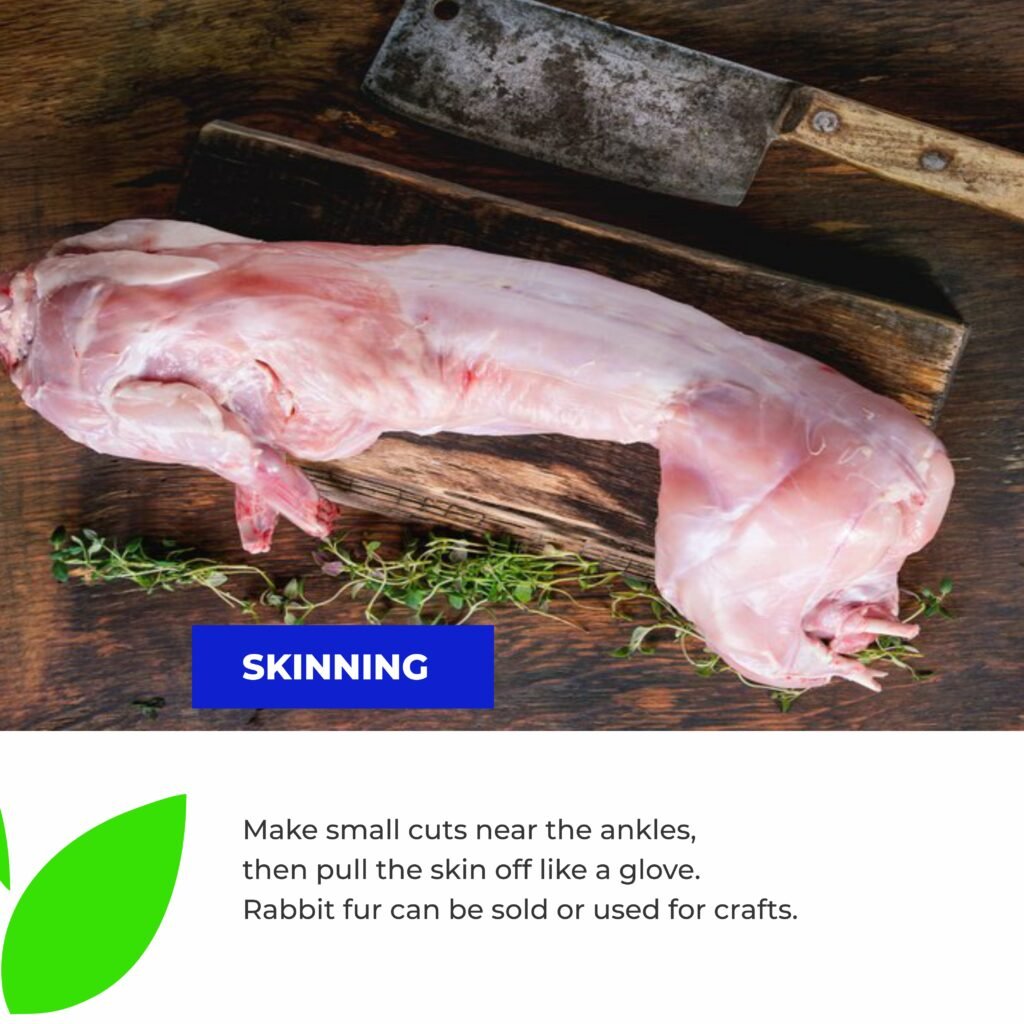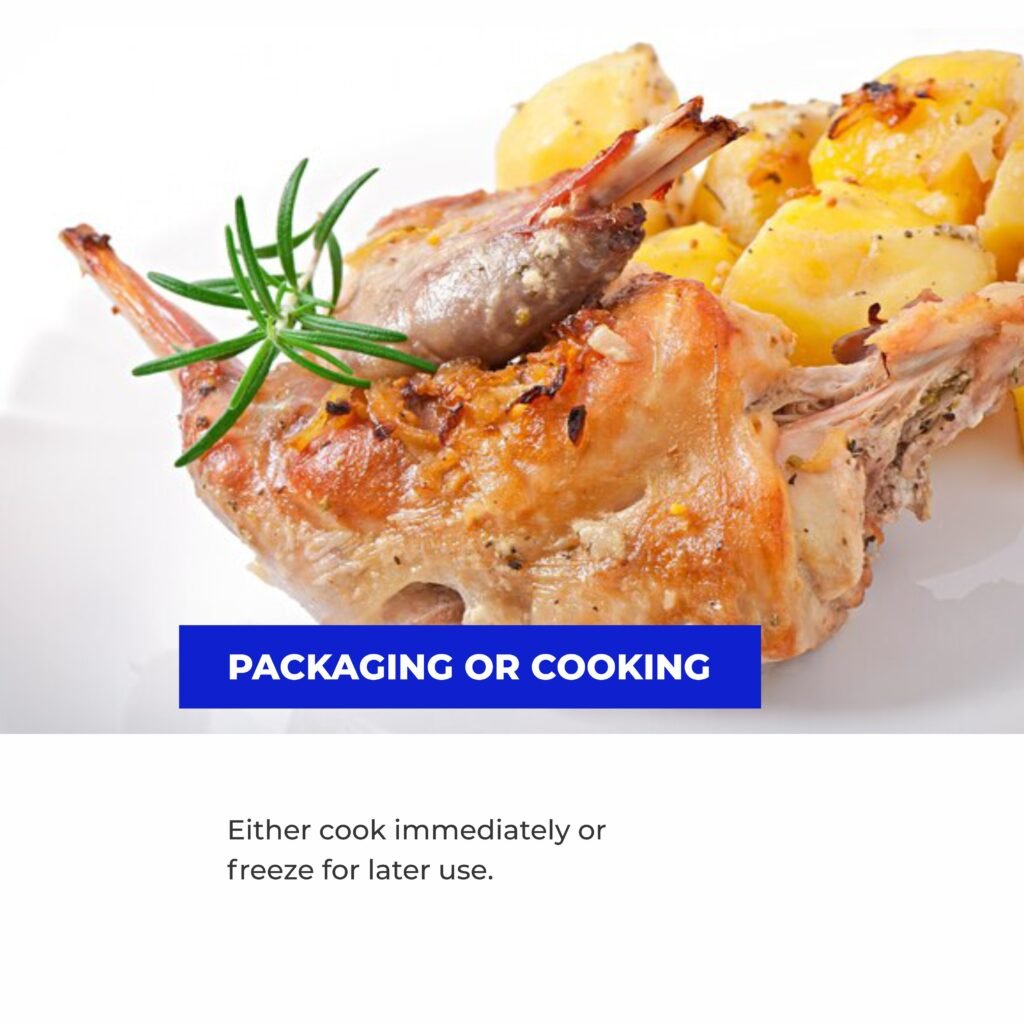
Once your rabbits reach a suitable size, typically around 2kg and between 16 to 18 weeks old, it’s time to process them for their meat. Processing rabbit meat involves several steps, which, when done correctly, ensure you get the best quality meat.
Slaughtering

The first step is humane slaughter. This needs to be done quickly and cleanly to avoid causing the animal stress and to ensure good-quality meat. Just like with any livestock, it’s important to be as efficient and respectful as possible.
SKINNING

Rabbit skin is fairly easy to remove. By making small cuts near the ankles, you can pull the skin off almost like removing a glove. Many people opt to sell the fur or use it for crafts, as rabbit fur has its own value in the market.
EVISCERATION

Evisceration involves removing the internal organs. This part of the process requires care, especially around the stomach and intestines, to prevent contamination of the meat. The organs can be discarded or used, depending on your preference.
CLEANING AND BUTCHERING

After evisceration, wash the rabbit thoroughly. The meat can then be cut into sections, with the legs, back, and ribs often considered the prime cuts. These parts are popular in many recipes, from grilled dishes to stews.
PACKAGING OR COOKING

Once butchered, the rabbit meat can either be cooked immediately or packaged for freezing. Rabbit meat is versatile and can be prepared in a variety of ways, from cooked to grilled.
Stay tuned for our next post where we will dive into the impressive health benefits of rabbit meat.


